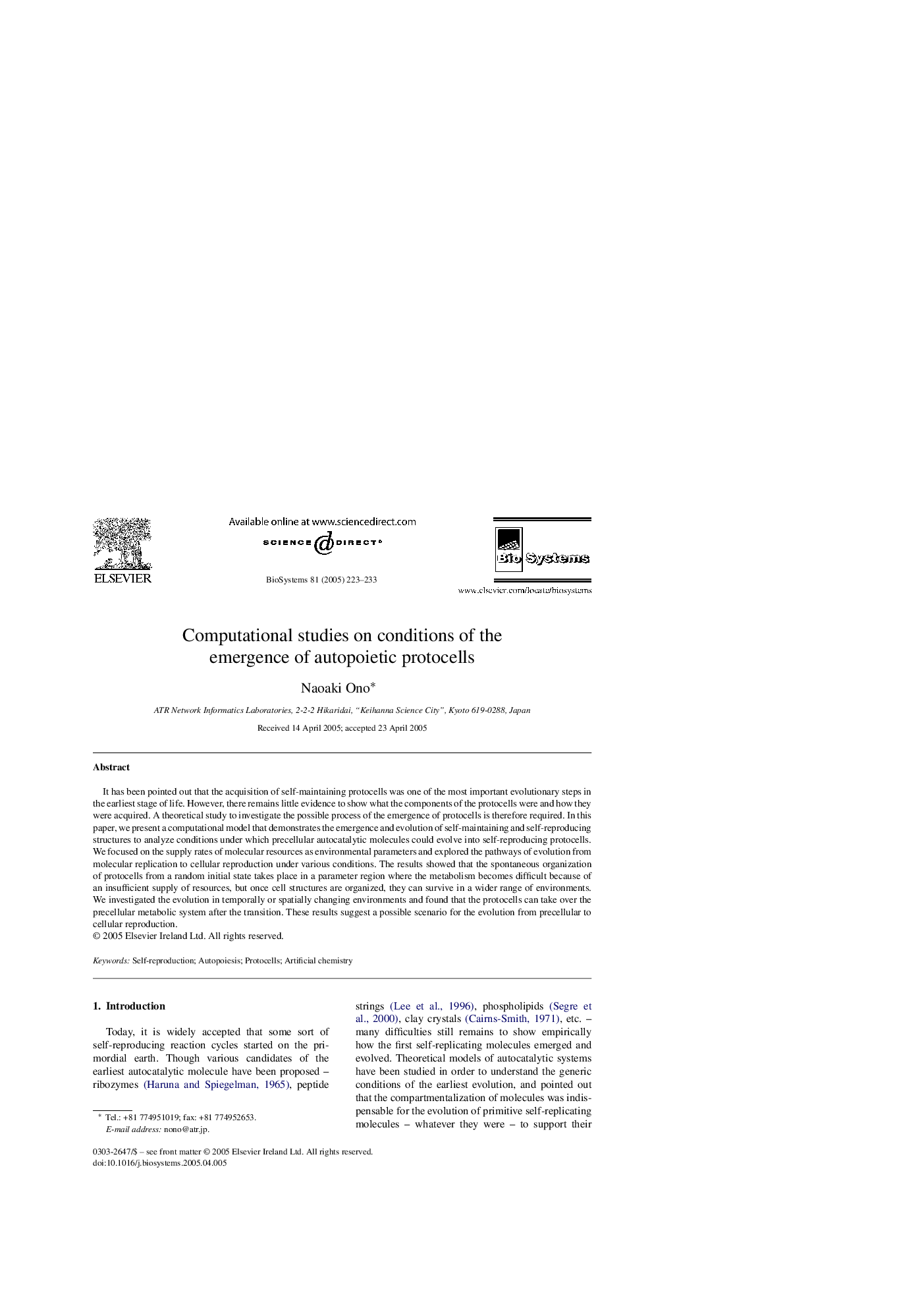| Article ID | Journal | Published Year | Pages | File Type |
|---|---|---|---|---|
| 10884710 | Biosystems | 2005 | 11 Pages |
Abstract
It has been pointed out that the acquisition of self-maintaining protocells was one of the most important evolutionary steps in the earliest stage of life. However, there remains little evidence to show what the components of the protocells were and how they were acquired. A theoretical study to investigate the possible process of the emergence of protocells is therefore required. In this paper, we present a computational model that demonstrates the emergence and evolution of self-maintaining and self-reproducing structures to analyze conditions under which precellular autocatalytic molecules could evolve into self-reproducing protocells. We focused on the supply rates of molecular resources as environmental parameters and explored the pathways of evolution from molecular replication to cellular reproduction under various conditions. The results showed that the spontaneous organization of protocells from a random initial state takes place in a parameter region where the metabolism becomes difficult because of an insufficient supply of resources, but once cell structures are organized, they can survive in a wider range of environments. We investigated the evolution in temporally or spatially changing environments and found that the protocells can take over the precellular metabolic system after the transition. These results suggest a possible scenario for the evolution from precellular to cellular reproduction.
Related Topics
Physical Sciences and Engineering
Mathematics
Modelling and Simulation
Authors
Naoaki Ono,
